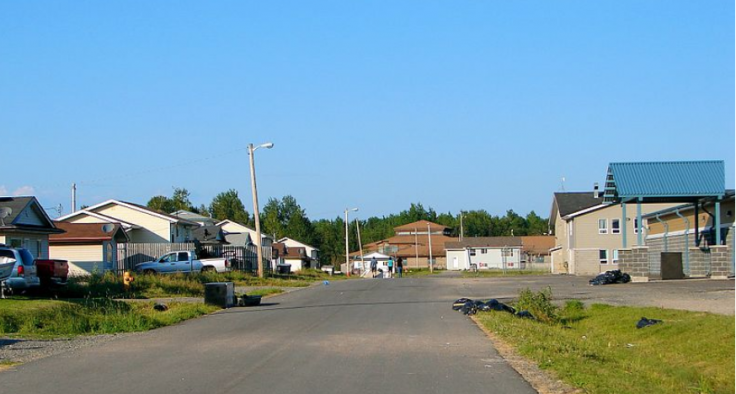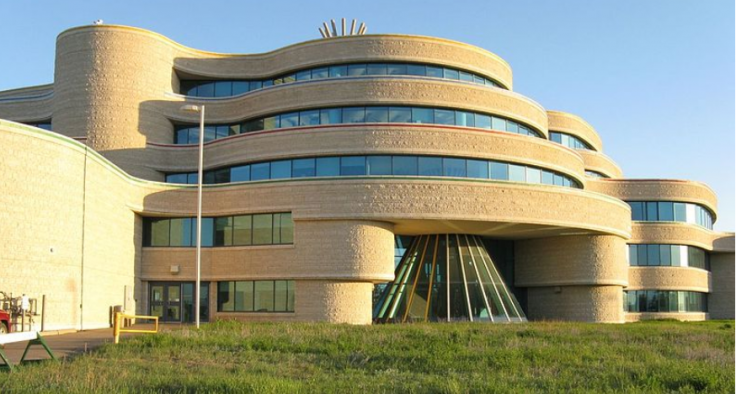Canada is hunting for the suspects after a stabbing spree left 10 people killed and at least 15 others wounded. The ghastly incident happened in a sparsely populated indigenous community in central Saskatchewan province on Sunday.
The stabbings were reported at 13 locations. The suspects have been identified as Damien Sanderson, 31, and Myles Sanderson.
There has been no conclusive information about the victims of one of the deadliest mass killings in Canadian history. The region where the stabbings took place, James Smith Cree Nation, is an indigenous community where only about 3,000 people live.

The details of the victims are only emerging, and the early reports indicate that the First Nation community members have been the victims. Some reports said the killers had targeted their victims. Police have not given any motive for the attacks.
"It appears that some of the victims may have been targeted, and some may be random. So to speak to a motive would be extremely difficult at this point in time," said Rhonda Blackmore, commanding officer of the Saskatchewan Royal Canadian Mounted Police.
Blackmore added that the police got messages about the stabbings in the First Nation community around 6 a.m. Then more reports of attacks started coming in from the community, according to the USA Today.
Statement From First Nation Community
The local First Nation community issued a statement after the massacre. The statement hinted at the possibility that the attack was drug-related.
"This is the destruction we face when harmful illegal drugs invade our communities," the Federation of Sovereign Indigenous Nations, the body that represents 74 First Nations in Saskatchewan, said in a statement.
Calvin Sanderson, an elected leader of the three First Nation communities in James Smith Cree Nation, said the attack has traumatized the community. "Everyone's been affected ... They were our relatives, friends. Mostly we're all related here, so it's pretty hard ... It's pretty horrific."
A relative of one of the victims said drugs and alcohol are sowing destruction in the communities. "It's sick how jail time, drugs and alcohol can destroy many lives," said Michael Brett Burns, according to the Aboriginal Peoples Television Network.

Who are Canada's First Nations?
According to the Canada Encyclopedia, First Nations are the Indigenous peoples not including the Métis and the Inuit. As per Statistics Canada, there are about a million First Nations in the country, accounting for less than 5 percent of the country's population. The community is also known by other terms like like Indians, Natives or Amerindians.
What is the James Smith Cree Nation?
The James Smith Cree Nation is a First Nation community located in the Canadian province of Saskatchewan. It is about 15,000 hectares in size. According to its official website, the total population is 3,412, while the number of on-reserve population is estimated to be at 1,892.
More information about the community is available in this website.
Who are Canada's Indigenous Peoples?
Canada's indigenous people are categorized into Inuit, Métis and First Nations. While the Inuit are mainly in the northern regions, the Métis peoples live mostly in the Prairie provinces and Ontario. They are of mixed European and Indigenous ancestry. The First Nations peoples were the original inhabitants of the land that is now Canada, according to the Canada Encyclopedia.

What are Relevant Numbers?
As per the 2016 census, some 1.6 million people in Canada identified themselves as Indigenous. This makes up about 5 percent of the national population. The First Nations population was pegged at 977,230, while the Métis stood at 587,545 and the Inuit population was estimated at 65,025. There are more than 600 First Nations in Canada, and they speak more than 50 distinct languages.
Where do They Live?
The First Nations live in hundreds of reserves in the country. According to Encyclopedia Britannica, there were 577 bands in Canada in 1982. By 2011 the number had gradually grown to 617, representing more than 50 nations. Most of the reserves are thinly populated, with some having less than 1,000 members. While most of the First Nations live on the reserve, there are some who live off the reserves as well.
Is Population Rising?
According to the latest census data, the First Nation communities are expanding. Their population both on and off reserve have been steadily rising. Between 2006 and 2016, the on-reserve population grew 12.8 percent while the off-reserve population grew 49.1 percent, according to Canada Enclyclopedia.








